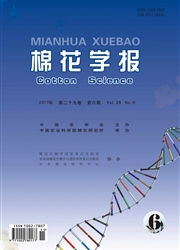

 中文摘要:
中文摘要:
探索利用环境小卫星数据进行棉花种植面积的提取,旨在利用国产卫星数据建立一种方便快捷的棉花种植面积提取技术,为棉花的遥感估产奠定基础:选取2011年新疆北部国营农场棉花不同生育期内两期HJ卫星影像,根据棉花与研究区其他作物物候和光谱差异性、农作物生长规律,运用监督分类算法、密度分割和逻辑运算,辅助于人机交互的目视解译,得到研究区棉花种植面积;结果表明:不同监督分类算法中,神经网络分类法和最大似然法分类效果最佳:最终提取的棉花面积总体精度为87.7%;本文采用的方法较为实际、便捷,提取棉花种植面积的精度符合农场生产要求。可为棉花估产和作物种植结构分析提供科学依据。
 英文摘要:
英文摘要:
Using data from environmental and disaster monitoring and forecasting satellites (HJ satellites), we endeavored to find an expedient way to extract cotton planting area, and to lay the groundwork for estimating cotton yield using remote sensing technology. We selected two HJ-1A/B images of the State Farm in northern Xinjiang, taken in 2011. We incorporated the phe- nology of cotton and other crops, seasonal differences, and field survey information, using supervised classification methods and density slicing, logistic arithmetic and refined the results by human-computer interaction involving visual interpretation and field investigation data, then successfully extracted an accurate cotton area for the study region. Neural net and maximum likelihood supervised classification appear to gain better results in classifying the land surface in this region, and the final extraction accuracy was 87.7%. This remote sensing method is accurate and convenient, and can meet the needs of farmers, while also providing a scientific basis for crop structure adjustment and cotton yield prediction.
 同期刊论文项目
同期刊论文项目
 同项目期刊论文
同项目期刊论文
 期刊信息
期刊信息
